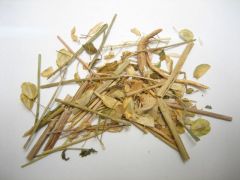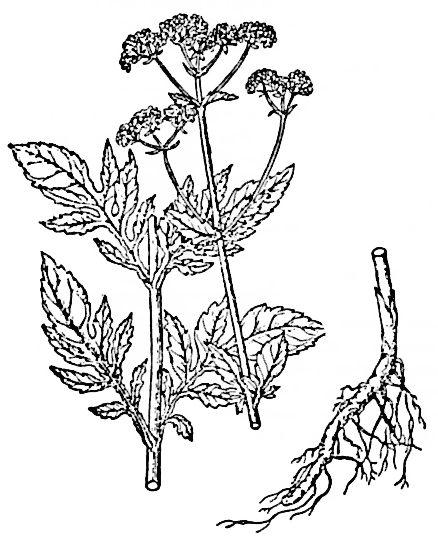- Suppurative abscesses, with
Lonicera
japonica- Jin yin hua.
[5]
- Intestinal abscess with fever, abdominal and costal pain, post partum abdominal
pain, and pain, redness, and swelling of the eyes, with
Lonicera
japonica- Jin yin hua,
Taraxacum mongolicum-
Pu gong yin.
[5]
- Suppurations due to smoldering Damp Heat, with
Coix
lachryma- Yi yi ren. For supurative intestinal abscess presenting without
Heat symptoms.
[5]
- Abdominal pain with fever due to post partum blood stasis, and for unsuppurated
Intestinal abscess presenting with an immobile abdominal mass. Use with
Paeonia
rubra- Chi shao.
[5]
- Chest and abominal pain, with
Trogopterus
xanthipes- Wu ling zhi,
Cyperus rotundus-
Xiang fu,
Angelica polymorpha- Dang
gui.
[5] [1] Barefoot Doctors Manual- Published
by Madrona Publishers Seattle Washington ISBN 0-914842-52-8
[2] A Complete English Dictionary of Medicinal Terms in Chinese Acupuncture and
Herbalism 1981 - Henry Lu Chinese Foundations of Natural Health- The Academy of
Oriental Heritage, Vancouver, Canada.
[3] Medicated Diet of Traditional Chinese Medicine- Chief Editor- Hou Jinglun.
Associate Editors- Zhao Xin, Li Weidong, Liu Jianxin, Geng Chun-e, Li Guohua,
Li Shaohua. Geijing. Science & Technology Press 1994. ISBN 7-5304-1735-5/R.
309.
[4] Translation notes from Gary Seiford and Hocu Huhn- NSW College of Natural
Therapies. Sydney Australia (1982).
[5] Chinese Herbal Medicine Materia Medica- Dan Bensky and Andrew Gamble- Eastland
Press 1986 Seattle Washington ISBN 0-939616-15-7
Images
1.
m.blog.daum.net
2.
cram.com
3.
[1]
4.
ja.wikipedia.org
CC by SA 1.2
Sinigrin, morroniside, loganin, villoside
(P. villosa); oleaniolic acid, b-sitosterol, hederagenin,
patrinoside, scabioside (P . scabiosifolia).
References
[1] Chinese Herbal Medicine Materia Medica- Dan Bensky and Andrew Gamble- Eastland
Press 1986 Seattle Washington ISBN 0-939616-15-7
 Patrinia
scabiosifolia. P. villosa. Sonchus
arvensis. 败
酱 草
Bài jiàng cǎo-
"Defeat paste herb" Patrinia
Family: Valerianaceae
Patrinia
scabiosifolia. P. villosa. Sonchus
arvensis. 败
酱 草
Bài jiàng cǎo-
"Defeat paste herb" Patrinia
Family: Valerianaceae

